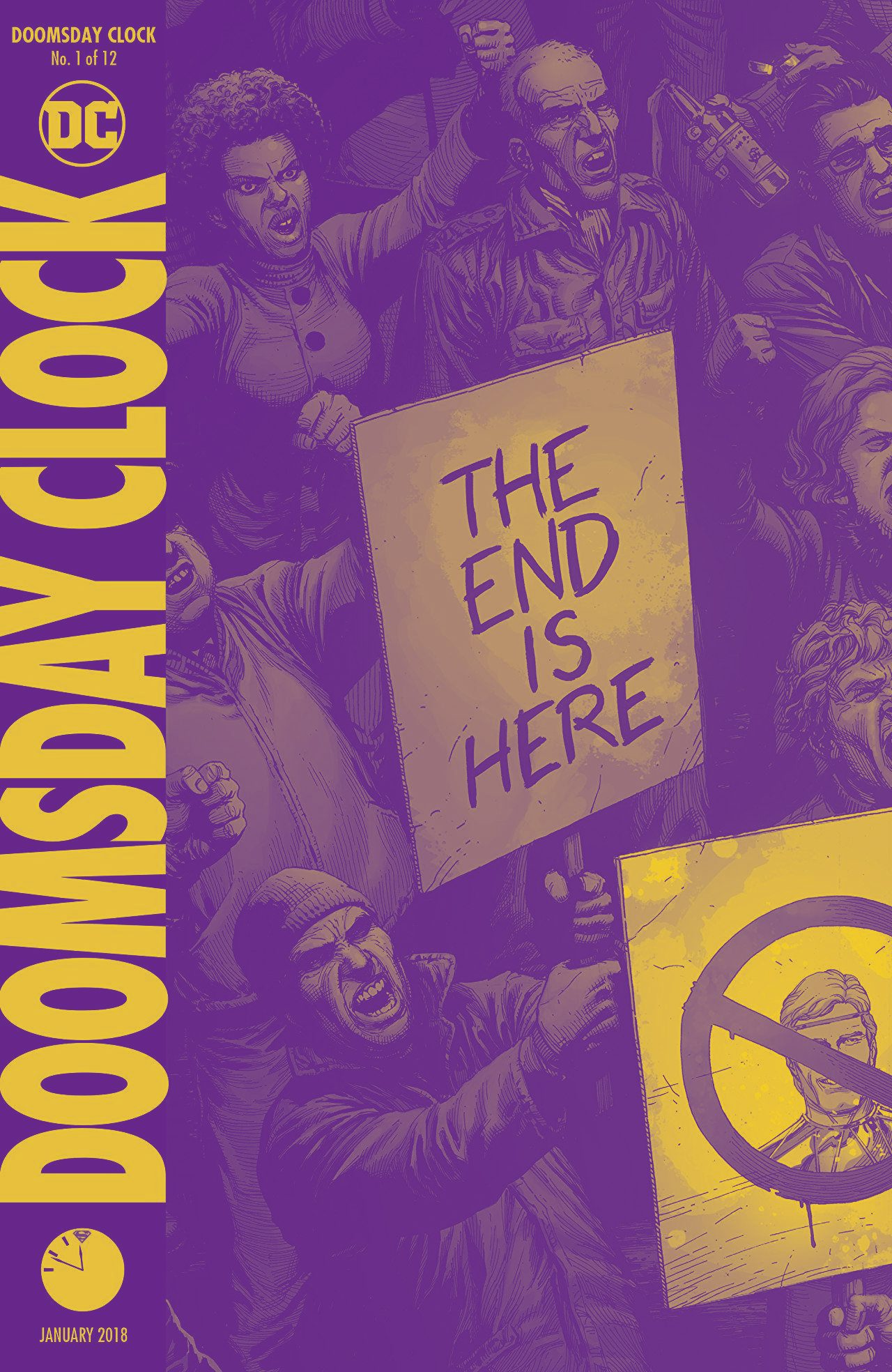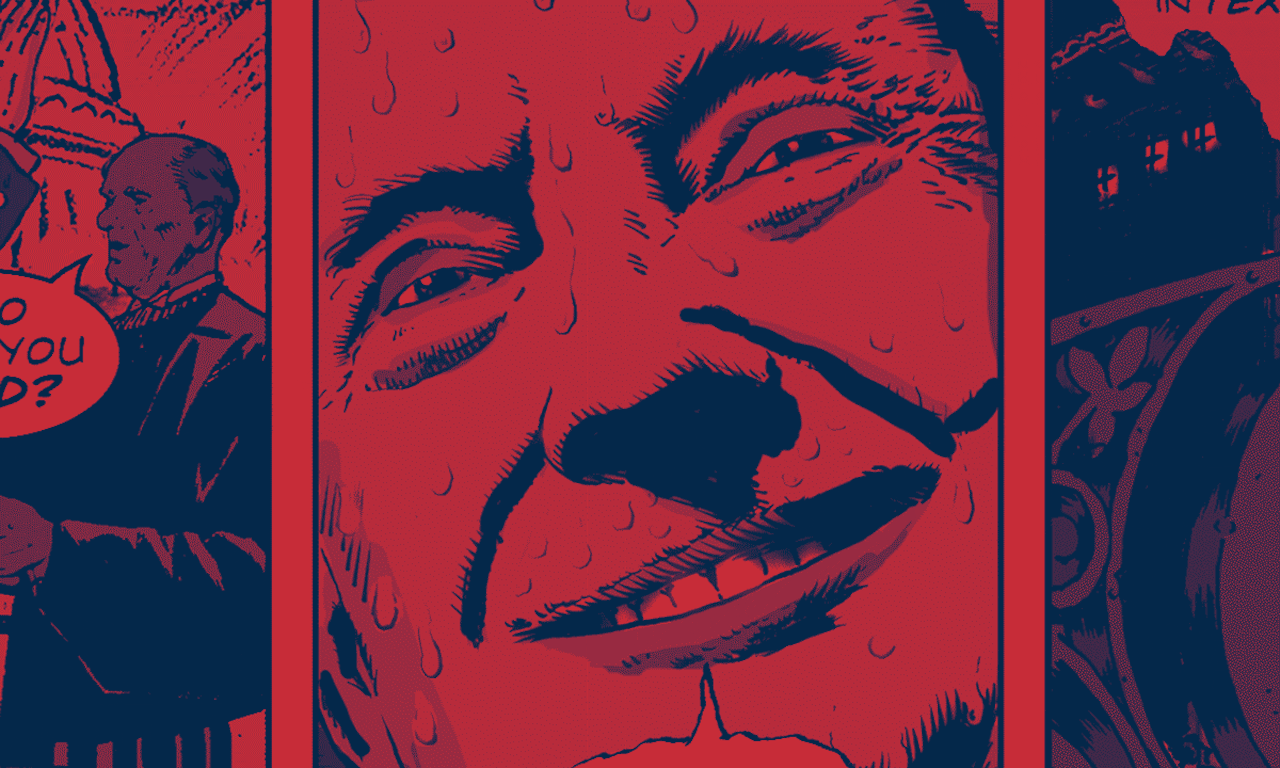In high school I worked at a comic book store, which means my head is filled with facts I will quite literally never need, like the identity of the ultimate Green Lantern (Sodam Yat) and the mechanics of the Hulk’s powers (in layman’s terms, the madder Hulk get, the stronger Hulk get). While this obviously makes me a gigantic hit at parties, it’s also given me an incredibly useful frame of reference for contemporary culture, which is now mostly composed of comic book adaptations. Much like Game of Thrones readers can better parse the tangled family trees, so can I glean the unspoken back stories of on-screen comic characters like Korg (Thor: Ragnarok) and Drax (Guardians of the Galaxy).
I don’t regularly read comics anymore, though I do keep track of the major events, to see if there’s anything worth diving into. Marvel and DC launch gigantic, company-wide storylines about once a year, with the hopes of attracting casual readers. And in recent years, nothing has fascinated me so grotesquely as Doomsday Clock, the new twelve-issue DC miniseries that attempts to fully bring Alan Moore’s Watchmen characters into the regular DC universe, and released its first issue last week. While Watchmen is not the best comic book of all-time — studied aficionados might argue for Art Spiegelman’s Maus, or Chris Ware’s Jimmy Corrigan — it’s easily the most acclaimed superhero comic. (In 2010, it was the only graphic novel named by Time’s list of best 100 books published since 1923.) A stand-alone miniseries published during the Reagan ‘80s as a commentary on then-contemporary superhero culture, for decades it stood definitively apart from the punch-him, kick-him adventures of Superman and his ilk.
Until now. This isn’t even the most recent attempt to modernize Watchmen. Currently, an HBO televised adaptation helmed by Lost creator Damon Lindelof is in the works. (It was announced in September, months after the announcement of Doomsday Clock.) In 2009, a long-developed cinematic adaptation helmed by Zack Snyder was released. It wasn’t very good, but it made enough money to show there was at least some wider interest in these characters beyond the built-in fans. In 2012, DC released Before Watchmen, a series of several prequels written by several of the industry’s top creators that nevertheless drew explicit criticism from writer Alan Moore, who signed away his rights to the Watchmen characters with the publication of the original series, taking away his ability to veto such cash-ins.
“What the comics industry has effectively said is, ‘Yes, this was the only book that made us briefly special and that was because it wasn't like all the other books,’” he said about Before Watchmen. “Watchmen was something that stood on its own and it had the integrity of a literary work. What they've decided now is, ‘So, let's change it to a regular comic that can run indefinitely and have spin-offs.’ and ‘Let's make it as unexceptional as possible.Æ Like I say, they're doing this because they haven't got any other choices left, evidently.”
But crucially, Before Watchmen was not universally rejected by skeptics. Comic fans are fickle as hell, but they will always wait and see to how it works, in hopes it will. The relative commercial and critical success of Before Watchmen told DC something very important: If it’s good enough, people will get over themselves and follow along. With their toe dipped in the water, to no appreciable blowback, why not jump all the way in?
The seeds for Doomsday Clocka year and a half ago, when DC began suggesting that Doctor Manhattan, the blue and nude Watchmen character whose abilities give him the power of God, had manipulated the history of the DC universe for unknown reasons. In Doomsday Clock, the gradual discovery of this manipulation is meant to climax in a face-to-face meeting between Doctor Manhattan and Superman, DC’s most iconic character. “There was a story to tell — an inkling of an idea with Superman and Doctor Manhattan — that was interesting,” writer Geoff Johns recently remarked. “I didn’t want to disrespect anything, but I had a story to tell.” (With respect to Johns, there’s no way Doomsday Clock would’ve come into existence had its parent company realized the potential to make gobs of cash.) Thus far, the integration has been promising: While sales for the first issue of Doomsday Clock haven’t been released, DC is currently seeing some of its highest sales in several years, partially on the backs of its new, Watchmen-adjacent storylines.
The first issue of Doomsday Clock (mild spoilers) picks up several years after the conclusion of the original Watchmen, where the world has apparently discovered Adrian Veidt’s scheme to bring global peace by simulating an alien attack that destroyed half of New York. With the threat of nuclear war once again imminent, several of the characters from the original Watchmen (including a new Rorschach, whose identity is yet unrevealed) are searching for Doctor Manhattan, to bring order back to their universe. In the closing beats, we cut to Superman in the regular DC universe, who dreams of the moment his parents died in a car crash, back when he was a teenager. Now, it’s heavily suggested that their death was caused by Doctor Manhattan. Why, exactly? Tune in for the next issue to find out.
For people who don’t read comics, this plot probably seems completely incoherent. Indeed, it’s a little embarrassing to rifle off the details out loud; I wanted to double over with shame when recently explaining it to a colleague. Nevertheless, I cannot stop, because everything about Doomsday Clock is completely insane and enthralling to me. It’s insane to write a sequel to a perfect story that needed no follow-up; it’s insane to create any narrative excuse to integrate the two tonally disparate worlds, like making Jesus Christ a member of the Avengers. As a tween, Watchmen was the first serious comic I read, and will always retain an outsized place in my heart. Its invocation guarantees my interest, as I'm sure it does for thousands others. Doomsday Clock, then, is the ultimate triumph of a corporation seeking to trample over artistic merit in order to grab an ungrabbed dollar from people who may have otherwise tuned out. In spite of my ideological protestations, I can’t look away.
Is Doomsday Clock any good? Well, maybe! Artist Gary Frank’s photo-realistic renditions of a New York in tumult are gorgeous to look at, and while Johns has never been the sharpest writer — his attempts at writing the new Rorschach’s paranoid inner monologuing are cringe-worthy — he is an expert plotter, capable of putting all the parts where they’re supposed to be. I finished the first issue absolutely intrigued, and excited for the next issue. DC knows what it’s doing — that even the most hesitant fans will tune in to see what’s going on, even if it’s just in hopes it’ll be a complete disaster. As a creative endeavor, it’s suspect; as an attention-grabbing venture, it’s brilliant.

